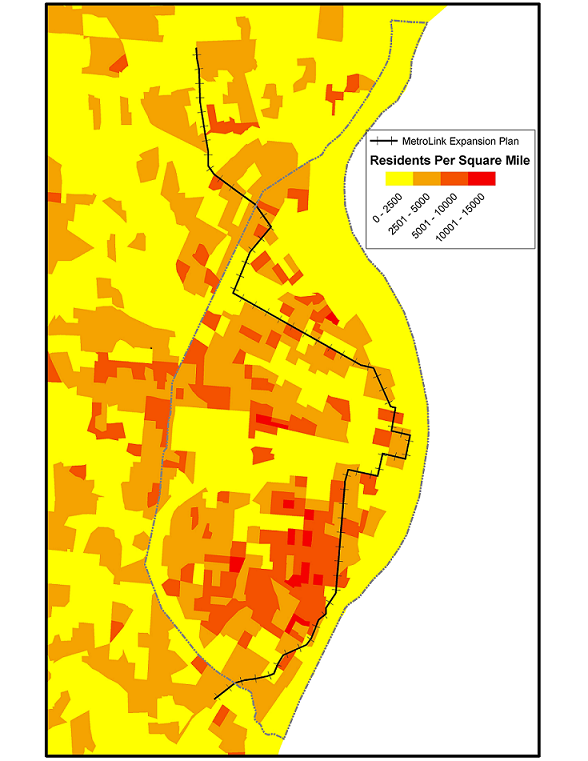Light Rail a Losing Proposition for Saint Louis
As the Post-Dispatch recently reported, Mayor Slay is starting to throw his weight behind a long-awaited expansion of the MetroLink, Saint Louis’s light rail system. The expansion plan, dubbed the North–South line, would operate on a north–south axis from North Saint Louis County, through downtown, and into South Saint Louis County. The push for light rail expansion in Saint Louis began directly after the last expansion was completed in 2006, and the region is currently conducting multi-million dollar studies on how to construct such a project. But with project costs likely to be anywhere between one to two billion dollars, is more light rail worth it in Saint Louis?

Assuming other types of public transportation service (such as buses) are unaffected, the addition of a North–South MetroLink line could increase the speed and quantity of public transportation in the Saint Louis region. Light rail is generally much faster than standard buses, so more rail can mean faster transit and more riders. However, light rail is not the only way to improve public transportation, and Saint Louis needs to consider light rail as just one option among many, perhaps not the most prudent one.
As we’ve discussed many times before, Saint Louis is a dispersed region, both in terms of where people work and where they live. Most residents live and work outside of Saint Louis City, and more people commute into Saint Louis County than Saint Louis City for work. The area in the region with the most employees and the highest payroll is not downtown, but West County. Nevertheless, the North–South MetroLink plan would route riders in and out of downtown Saint Louis, as if the year were 1904. In terms of population density, most of Saint Louis City (and nearly the entire planned route of North-South MetroLink) has less than 5,000 residents per square mile. Cost-effective light rail systems generally have population densities nearing 20,000 people per square mile around stops.
Saint Louis’s existing MetroLink lines already encounter ridership problems, despite serving areas with more employment and population than the proposed North-South line would. After spending more than $2 billion building the current system, a lower percentage of Saint Louisans use transit now than did in 1990. And, despite the hopes of transit activists, the situation is not getting any better. Both MetroLink and MetroBus ridership peaked in 2008, and even as better economic times have come to Saint Louis in the last few years, MetroLink ridership continues to stagnate. The result of this failure to draw more riders is that, accounting for all light rail costs since 1992, the MetroLink has cost Saint Louis nearly $10 for every passenger that has ever stepped on board, with a one-way fare of only $2.50. The bottom line is that the existing MetroLink has, despite the investment, failed to achieve meaningful progress toward promoting transit ridership or generating urban development. There is little reason to believe that an expansion will yield better results.
Fortunately for the region, adding more rail is not the only way to improve public transportation. Saint Louis could, for far less than a billion dollars, improve its poorly managed bus system or implement bus rapid transit, both options made much easier by the incredibly low traffic levels on Saint Louis’s highways and arterial roads.
However Saint Louis officials move forward, they would do best to consider public transportation plans that take the city as it is, and not how transit activists want it to be. If they don't the system will continue to operate as it does today: expansive yet inefficient, expensive yet resource-poor, overbuilt yet under-ridden.


